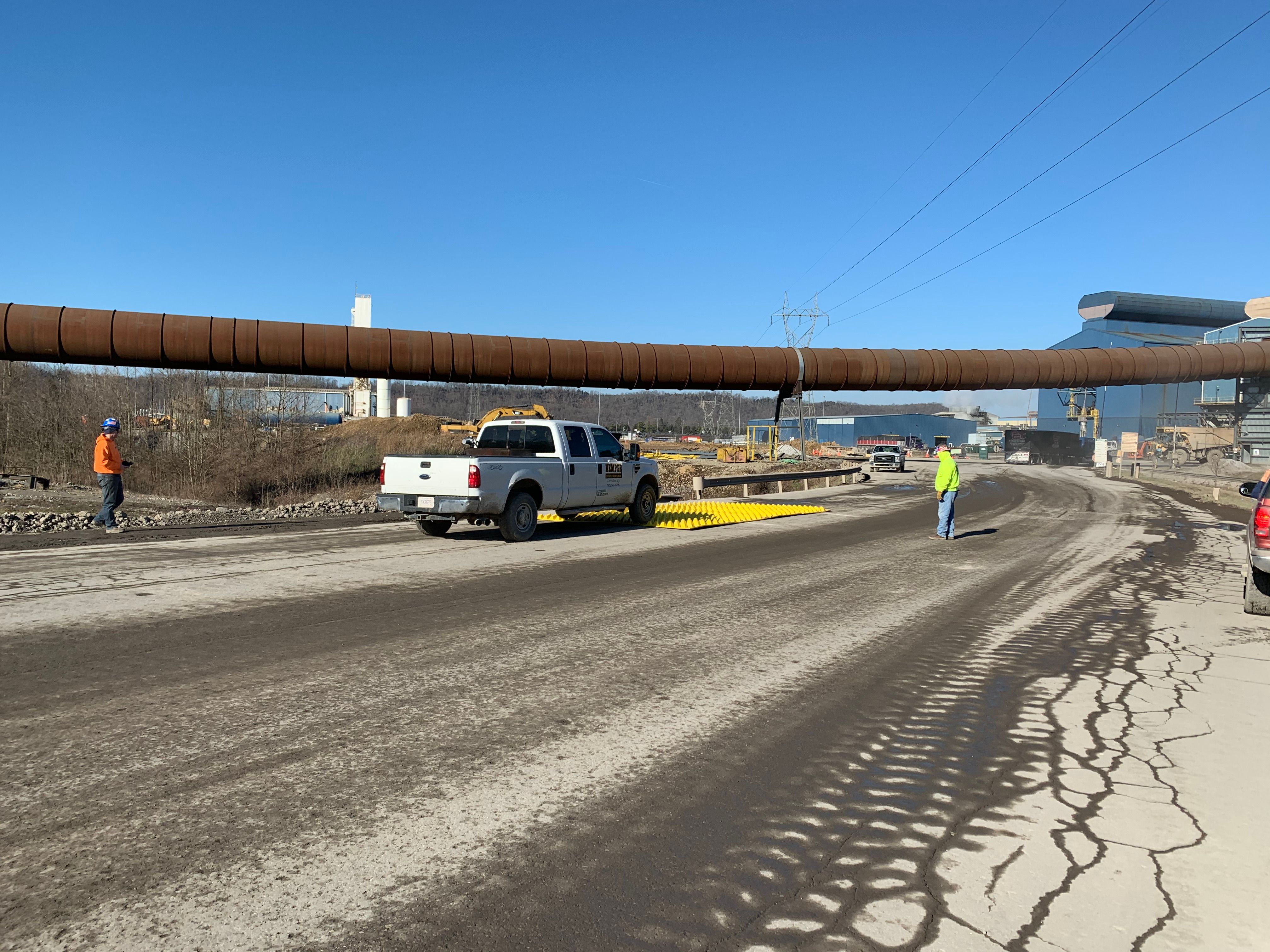Kentucky Stabilized Construction Exit Details
The Division of Water (DOW) in the Kentucky Department of Environmental Protection (DEP) administers the Clean Water Act throughout the state. The Kentucky Pollutant Discharge Elimination System (KPDES) was established to regulate and enforce the requirements of the Kentucky Administrative Regulations (KAR). Point sources of pollution that discharge into waters of the Commonwealth. The DEP Division of Water determines the effluent limitations that are included in KPDES permits which takes into account the water quality as well as current technology.
The KPDES regulates all water dischargers including Municipal Wastewater Dischargers, Discharges from Separate Storm Sewer Systems, Manufacturing and Industrial Sites, as well as Construction Sites. These dischargers are known as pollution point sources because the sources of pollution are contained in a well defined area.
Construction sites that disturb one or more acres of land are required to obtain a KPDES stormwater permit to operate. Contractors must submit an KPDES permit application along with a Stormwater Pollution Prevention Plan (SWPPP) which outlines pollution sources and Best Management Practices (BMP) the will be used to reduce the pollutants that are discharged. A Notice of Intent (NOI) to at least seven days prior to commencing activity, and the eNOI website can be used to submit a Notice of Intent as well as a Notice of Termination (NOT). KPDES construction permit coverage will automatically terminate after two years, unless the operator submits a NOI-SWCA application for renewal.
Wastewater Discharge Permits for each industry are listed on the Energy & Environment Cabinet website, which include multiple Industrial and Construction Permits. For each permit type there are additional resources to aid in the development of a SWPPP such as General Instructions and Guidance Documents to help contractors create a SWPPP and obtain a permit.
KPDES Construction General Permits & BMPS
All construction sites that disturb an area of one acre or more are required to obtain obtain a Kentucky KPDES Permit. Contractors applying for a General Permit (KYR100000) must submit a SWPPP plan along which their application which describes potential pollution sources on the job site as well as Best Management Practices (BMP) which will be used to minimize polluted stormwater discharges.
The Kentucky DEP has collaborated with the University of Kentucky to create an Erosion, Sediment and Pollution Runoff BMP Manual which informs contractors about common strategies for preventing pollution on the job. This manual explains various BMPs which can help to contain pollution and reduce or eliminate polluted stormwater discharges. In many cases, multiple BMPs are offered to address to the same pollution source.
KDOT Stabilized Construction Exit BMP Details
Stabilized Construction Exits are described as a Site Preparation BMP in Section 4.3.2 of the Manual. This BMP should be installed “before clearing and grading work begins” and should be maintained until the site is fully stabilized. The purpose of Stabilized Construction Exits are to reduce off-site tracking of mud, sediment, and contaminants onto impermeable surface which can then wash into storm drains and cause sedimentation or other pollution damage. Construction exits are placed at all points of egress and all traffic is restricted to using construction exits as they leave the job site.
The manual outlines the traditional method of reducing trackout which is the use of an aggregate based rock tracking pad. A aggregate construction exit is a 12’ wide by 50’ long pad of aggregate that is at least 6 inches deep. The aggregate must be 2-3 inch stone (KYTC No. 1 or No. 2, not 57s or DGA). Geofabric material is typically placed below the rock to improve stability and prevent soil from seeping up into the rock pad.
Stone construction exits require inspection and maintenance to remain “in a condition that will prevent tracking or flowing of sediment.” The manual requires two inspections per day during dry weather conditions and additional inspections during wet conditions. The effectiveness of a stone construction exit relies on the roughness of the tracking pad and will no longer be effective when rock becomes compacted or soil builds up between the voids in the aggregate. To refresh the construction exit, additional rock is added as a top dressing to restore voids in the aggregate. Maintenance frequency is related to total vehicle traffic, weather conditions, and soil conditions.
Other BMPs that are mentioned in the manual for reducing vehicle tracking are shaker plates and wheel wash stations. Shaker plates use aggresive agitation to remove sediment from tires and are installed over an excavated void which captures the sediment as vehicles drive over. Shaker plates, sometimes called rumble plates, or rumble strips, are typically used to supplement a rock tracking pad exit.
Wheel wash stations on the other hand can be used as a stand alone solution to vehicle tracking. Wheel wash stations require a sediment basin or other water containment system to capture runoff laden with sediments from vehicles tires. Some wheel wash stations filter and recycle water to avoid the need for a consistent water supply. Wheel wash stations cause vehicles to exit the job site carrying excess water which can form ice in cold conditions causing a road hazard.
FODS Construction Exit System offers a different approach to traditional techniques to prevent vehicle trackout. This effective system is designed to be used as a stand-alone solution that does not compact or degrade over time, even during wet weather conditions. This system is a durable, reusable method to creating a stabilized construction exit.
FODS Reusable Construction Exit
FODS Stabilized Construction Exit System consists of modular 12’ wide by 7’ long high-density composite mats. Being a modular system, the mats can be arranged in various layouts to fit the soil conditions and space constraints of the job. FODS can be installed without excavation and over a variety of substrates including soil, asphalt and concrete. Installation, relocation, and maintenance can be completed without heavy equipment.
FODS Added Kentucky Product Evaluation List
FODS has been added to the Kentucky Product Evaluation List (KYPEL) and is ready for use on projects in the State of Kentucky.
The FODS Trackout Control System is well suited for phased construction projects such as highway and pipeline projects where construction entrances must be installed on each phase throughout the project. The portable entrance can be relocated as needed reducing costs on each deployment. The entrance does not introduce aggregate and can reduce the risk of rocks entering the active lanes which can create hazards for vehicles.
Please contact us if you need any assistance in using FODS on your project.
ADDITIONAL RESOURCES:
Kentucky Product Evaluation List - FODS
Kentucky Wastewater Discharge Permits
KPDES Wastewater Discharge Form 1
KYR10 - Stormwater Construction
General Permit KYR100000 KPDES Permit
Kentucky Online Gateway - eNOI
Stormwater Pollution Prevention Plan - Best Management Practices Plan
Kentucky Erosion Prevention and Sediment Control Manual
Kentucky Erosion Prevention and Sediment Control Field Guide

